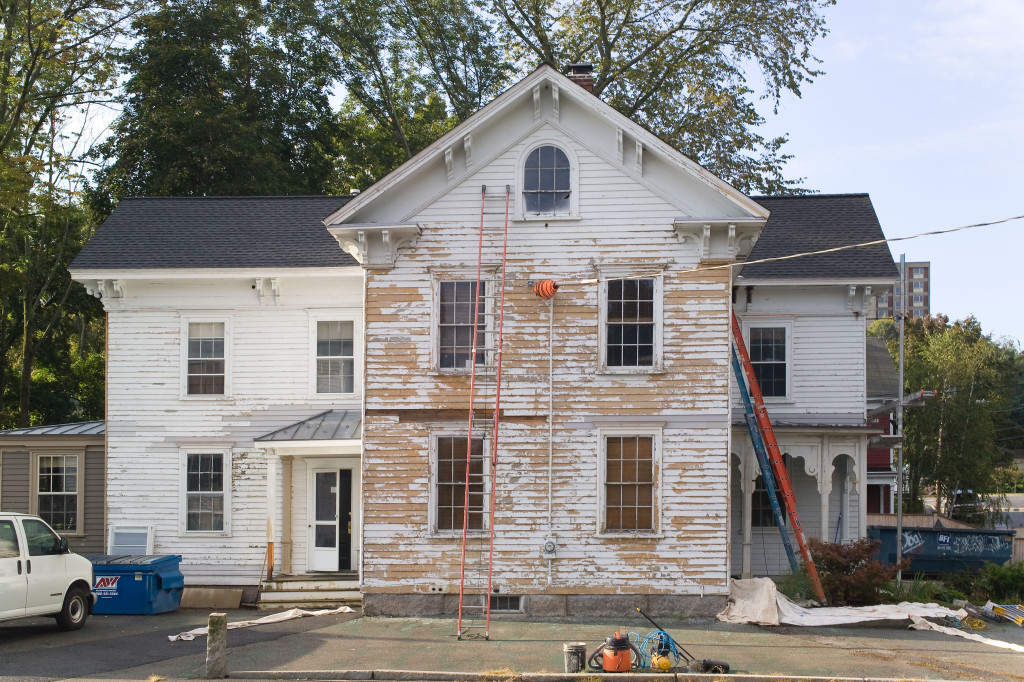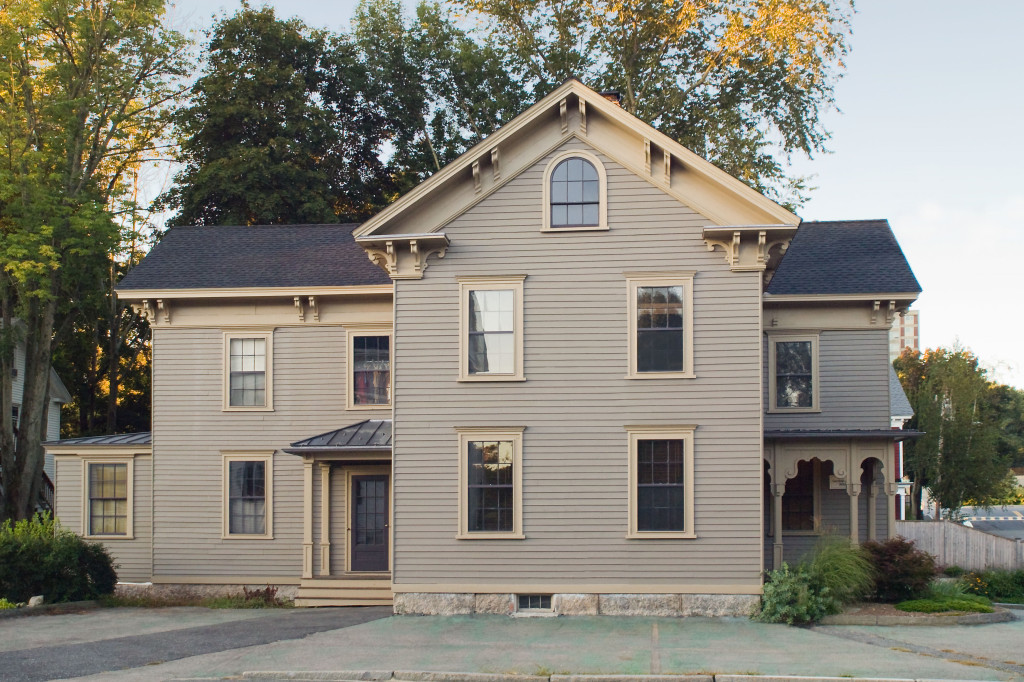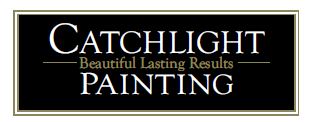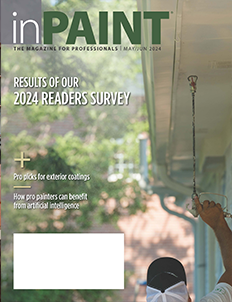CATCHLIGHT PAINTING
 The president of Catchlight Painting and a member of the PDCA’s Board of Directors, Costolloe has honed his acumen for more than 20 years, managing two paint companies on both coasts in the process.
The president of Catchlight Painting and a member of the PDCA’s Board of Directors, Costolloe has honed his acumen for more than 20 years, managing two paint companies on both coasts in the process.
DIFFERENTIATION MATTERS
When Costolloe started his first company, Natural House Painting, in Berkeley, CA in the late ’80s, he sought ways to stand out and appeal to the health-conscious academic community where he was based.
 “I was one of the first to use the first-generation zero- VOC paint—one product manufactured in California and another from West Germany. I was 25 years ahead of the zero-VOC game,” he says.
“I was one of the first to use the first-generation zero- VOC paint—one product manufactured in California and another from West Germany. I was 25 years ahead of the zero-VOC game,” he says.
When life-changes in the early ’90s moved him to the Boston area, he again made an effort to appeal to the needs and expectations of prospective customers.
Among the first things he did was rename his company Catchlight Painting. “It’s a much more distinctive name than Natural House Painting. It refers to a photographic term in which the pupil of the eye reflects a light source,” he explains. “Plus, I didn’t want to be the fourth company with the name ‘Costello Painting’ in the Boston area.”
But that’s not all.
PROJECTING PROFESSIONALISM
In researching the competitors in his new market area, Costolloe quickly realized an opportunity to differentiate himself simply through style.
“I would show up for a meeting wearing a button-down shirt with a three-page presentation prepared on a computer. Our competitors weren’t using computers at the time. Most contractors would show up for an estimate and scribble some numbers down on the back of a business card.”
The polished approach worked. “It differentiated me and allowed me to elevate my business quickly,” Costolloe says. It also helps to have an English accent, he says. In both Berkeley and Boston, elocution, vocabulary and diction go a long way to establishing expertise, bona fides and trust.
He also had the benefit of working with customer service consultant CustomersThatClick.com; this process helped formalize their level and delivery of customer service. Costolloe also implemented a comprehensive project evaluation form based on the Net Promoter Score, which simply asks the customer, ‘Would you refer us?’ They have yet to receive a ‘No.’
“Our evaluations are never about me, the owner,” he says, “only about the foreman and crew; they are customer-facing every day and it’s their presentation that leaves a lasting impression with our customers. Past customers will call about a new project and request a foreman by name—how great is that?”
Though now a recognized PDCA leader, Costolloe wasn’t initially enthusiastic.
“[At first] I put off joining PDCA,” Costolloe says. “I had a master’s degree in Political Science— what could a bunch of painters teach me? But then I attended a PDCA event in Chicago and realized how little I knew. I was in a room with 150 professional painters doing much better than I was. It was humbling, nauseating and inspiring.”
Through PDCA, he says, “I’ve learned everything from how to hire the right people to how to recognize and fire bad employees, and to embrace profitability while building a company culture.”
RESPECT-AND-REWARD MANAGEMENT STYLE
Among the lessons and ideas learned through PDCA is a management approach that begets happy employees and customers.
“We take great pride in our ability to treat employees well,” says Costolloe.
Catchlight employees enjoy up to 14 days PTO a year, a week of paternity leave, a week of grievance leave for the loss of immediate family members, life coaching, health insurance, and retirement benefits.
According to Costolloe, much of the success needed to offer the benefits and to implement them came through the knowledge gained through his participation in PDCA.
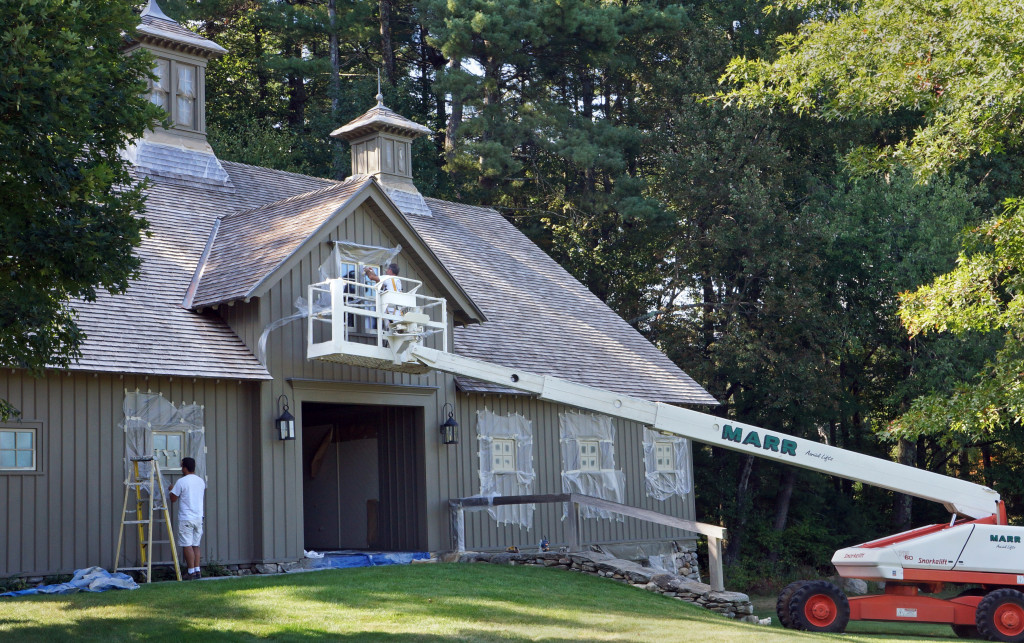 Catchlight sends staff members to training events around New England and invites vendors and reps to their shop for all-hands presentations on a monthly basis. “This is a significant expense, but it sends all employees a message: we expect them to be learning constantly, and will invest in them to make them better, smarter painters,” says Costolloe.
Catchlight sends staff members to training events around New England and invites vendors and reps to their shop for all-hands presentations on a monthly basis. “This is a significant expense, but it sends all employees a message: we expect them to be learning constantly, and will invest in them to make them better, smarter painters,” says Costolloe.
Catchlight also uses two online training tools; one by the Paint Quality Institute and more recently, the Master Painters Institute. Both are designed to develop the painters’ familiarity with coatings chemistry, paint failures, application techniques, and productivity. Additionally, every painter is EPA RRP certified and quarterly blood testing assures us that their staff is compliant with lead-safe protocols.
PROFIT MULTIPLIERS AND PROCESS ANALYSIS
Costolloe attributes his success to Woody Allen’s philosophy that ‘90% of success is just showing up.’ Costolloe believes the remaining 10% involves being open to new ideas, challenging conventional thinking, and embracing change. Two concepts have resonated most with him include: 1) Failure is just another test result, and 2) You are living the life and business of your design; if you don’t like the results, change the design.
To Costolloe, these simple truisms have been freeing. “The first, because it embraces failure as evolution and, if managed well, creates a positive outcome. The latter because it helped me to think more systemically about business processes—if a project goes sideways, it is more constructive to identify the lack of process or system that allows the mistake to occur than to simply find a culprit to blame. This reduces blood-pressure levels for all involved, creates a more harmonious and productive workplace, and engenders trust, loyalty and respect.”
Finally, Costolloe notes, “It’s easy to stand out in our industry—minimal regulations, low barriers to entry—the playing field is anything but level. We can either blame low-cost competition for our lack of success or we can choose to build a truly professional company that stands head and shoulders above the crowd. The choice for me has always been an easy one.”
________________________________________________________________________________________________________
Nigel Costolloe – President and Owner
(617) 734-1696 – CatchlightPainting.com

